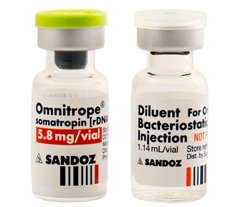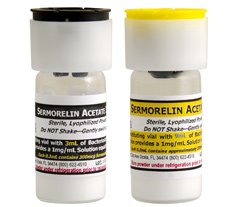Types of Testosterone Therapy

There are many ways to treat low testosterone levels, and it takes a specially trained doctor to determine what the best option is for each individual. With so many types of testosterone therapy to choose from, it would be hard to know what your own best choice would be without this guidance. The wrong method of treating Low T, or even the wrong dosage or frequency of administrating this medication could not only inhibit the desired outcome and results, but it could also bring about unwanted side effects.
Men and women also have different needs for treating testosterone deficiency in the body due to the fact that men have a much higher level of testosterone production and require a type of testosterone therapy that will address that need. The remainder of this report focuses on those specific needs.
Best Type of Testosterone Therapy for Men
Men have many options for testosterone treatment for Low T. The most commonly prescribed is testosterone cypionate injections. The reasons doctors and clients alike find this treatment desirable include the following:
- Ease of use – administered shots at home take only a few minutes once every 10 to 14 days
- Long-lasting effects of treatment
- Affordability – testosterone cypionate injections are the most economically priced option
Testosterone cypionate injections have a long half-life and can be easily administered into the upper thigh. Clients can choose between Depo-Testosterone, Watson, or generic testosterone cypionate compounded in the pharmacy.
Among the other possible types of testosterone therapy that might be prescribed are:
- Testosterone enanthate injections – not as long-lasting as cypionate, so the time between doses will be shorter
- Testosterone propionate injections – rarely used due to rapid assimilation in the body causing the need for frequent injections; sometimes used in conjunction with testosterone cypionate injections if the individual has a severe deficiency that requires a jumpstart of sorts at the start of the treatment protocol
- Testosterone skin patches – although both scrotal and nonscrotal patches are available, most men do not opt for scrotal patches since the scrotum must be shaved, and there is an increased risk of irritation and discomfort; nonscrotal patches are available in a variety of brands that can use the arm, abdomen, shoulder, or other areas as directed by the doctor – possible rash and irritation may occur
- Topical testosterone gels – although available for use in a number of areas of the body, the many brands of testosterone gel can cause skin irritation, and there is no way of knowing how much medication is actually being absorbed into the bloodstream
- Testosterone nasal gel – Natesto is administered by pump into each nostril three times a day
- Oral tablet – the testosterone brand name Striant is a tablet that adheres to the gum area between it and the inner cheek; Striant can be accidently swallowed or affect how food tastes, and it can leave a bitter taste in the mouth or cause tooth or gum irritation and pain
- Oral testosterone pills are not recommended – there is a high chance of liver toxicity when testosterone is metabolized in that organ
- Implantable testosterone pellets – also not recommended due to the ability for the pellets to come out from the skin and the high level of difficulty that a doctor would have if removal was deemed necessary
The hormone replacement specialist will help each man determine which of the types of testosterone replacement therapy will best suit his personal needs.
Best Type of Testosterone Therapy for Women
Although women produced much less testosterone in their ovaries and adrenal glands than men do in their bodies, it is still just as important for a female to maintain a healthy level of testosterone in her body. With the exception of certain types of hormone specific breast cancer, injections do not fall under the advised types of testosterone replacement therapy for women. The dosage of medication in testosterone injections is much too high for a woman’s needs.
The most commonly prescribed form of treatment for female Low T is testosterone cream. Compounded by a pharmacy to the precise dosage prescribed by the doctor, this type of testosterone is the best option for women. It will raise the level of testosterone in a woman’s body to its optimum point without worry about unwanted side effects from too high a dose.
Whether you are a male or female, if you have concerns that Low T many be an issue in your life, please contact Kingsberg Medical and speak with one of our hormone replacement specialists to learn more about getting tested for low testosterone and receiving the treatment that is right for you. Free and confidential consultations are provided by phone.
Brian Leeber



















